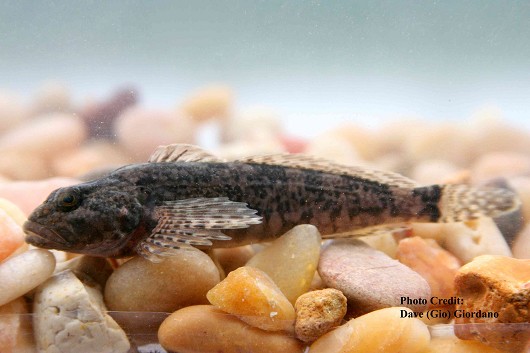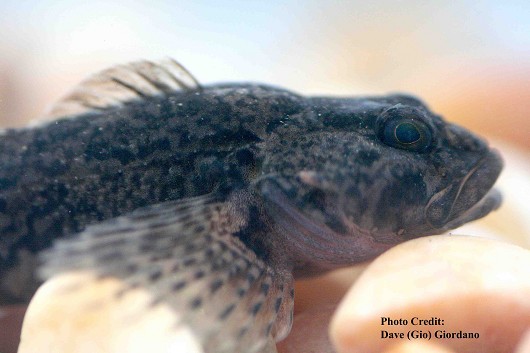Pit Sculpin
-
Scientific NameCottus pitensis
-
NativeYes
-
Identification
 Pit sculpin. Modoc County, CA. July 10, 2007.
Pit sculpin. Modoc County, CA. July 10, 2007. Pit sculpin, head. Modoc County, CA. Date: July 10, 2007.
Pit sculpin, head. Modoc County, CA. Date: July 10, 2007.- Resembles Riffle Sculpin
- Up to 127 mm SL
- Pre-opercular spines (2), sometimes (3)
- Median chin pore usually absent
- Prickles present behind and above origin of pectoral fins
- Coloration: variable, light underside
- Dark dorsal saddles present (5-6): 2 below 1st dorsal, 3-4 below 2nd dorsal
- Dark band may be present on caudal peduncle
- Bands present on pectoral, caudal, and 2nd dorsal fins
- Large blotch on back of 1st dorsal fin
- Fin rays/spines: pectoral 12-16 rays, pelvic 3-4 rays/1 spine, 1st dorsal 8-9 spines, 2nd dorsal 16-19 rays, anal 12-15 rays
- Lateral line: usually complete, 31-39 pores
-
Life History
Pit Sculpins are found predominantly in streams with temperatures below 25°C and oxygen levels near saturation. These waterways include fast rocky streams, spring fed creeks, and large boulder filled rivers. Pit Sculpins are usually found in swift currents in riffles or runs. In some rare cases Pit Sculpins may share habitat with Marbled and Rough Sculpins, and they are often found in association with rainbow trout, speckled dace, and Sacramento suckers. Pit Sculpins feed mostly on aquatic insects throughout the day and night and may become aggressive at times. Peak feeding is typically in the early morning. Pit Sculpins become sexually mature in their second year and the age-class population decreases with every passing year. The sculpins spawn in February through early May with most breeding occurring in late February and March. Male Pit Sculpins develop dark breeding colors and an orange band on their dorsal fin. They entice females to lay eggs within their rock cave. Male Pit Sculpins may fertilize the eggs of several females. The fertilized eggs stick to the substrate within the caches and eventually larval sculpins hatch, though they remain close to the cave for some time.
-
Links to Other ResearchN / A

